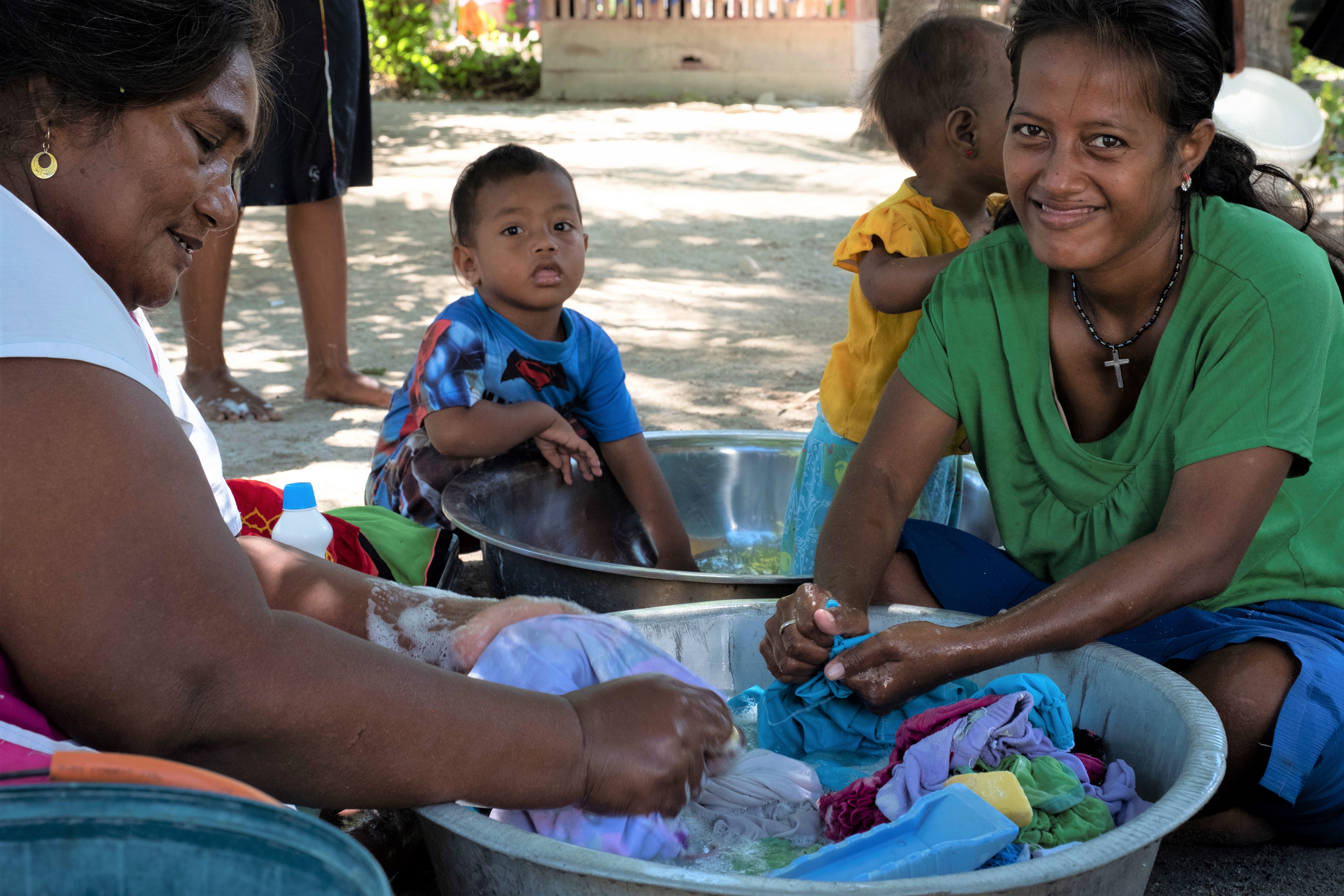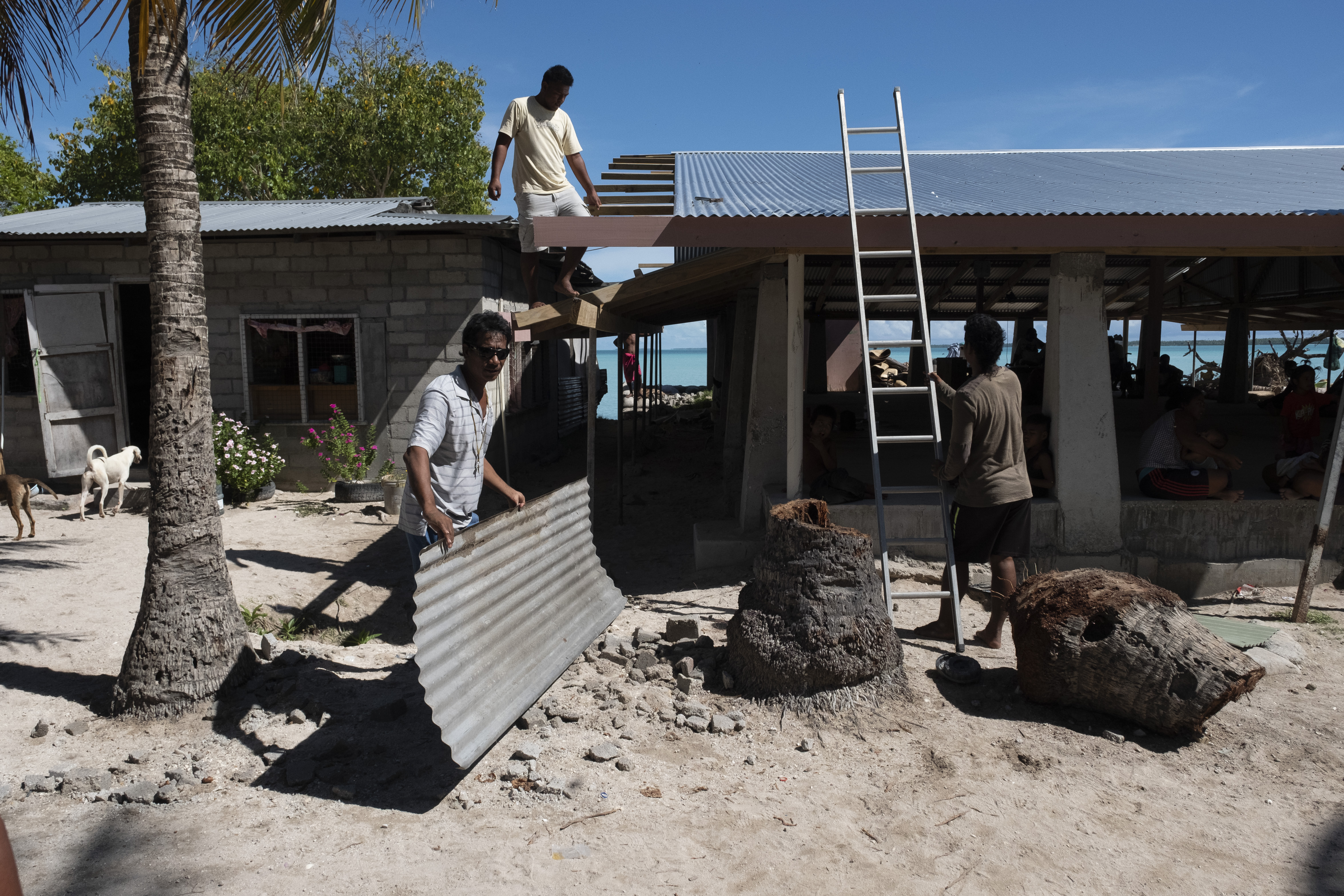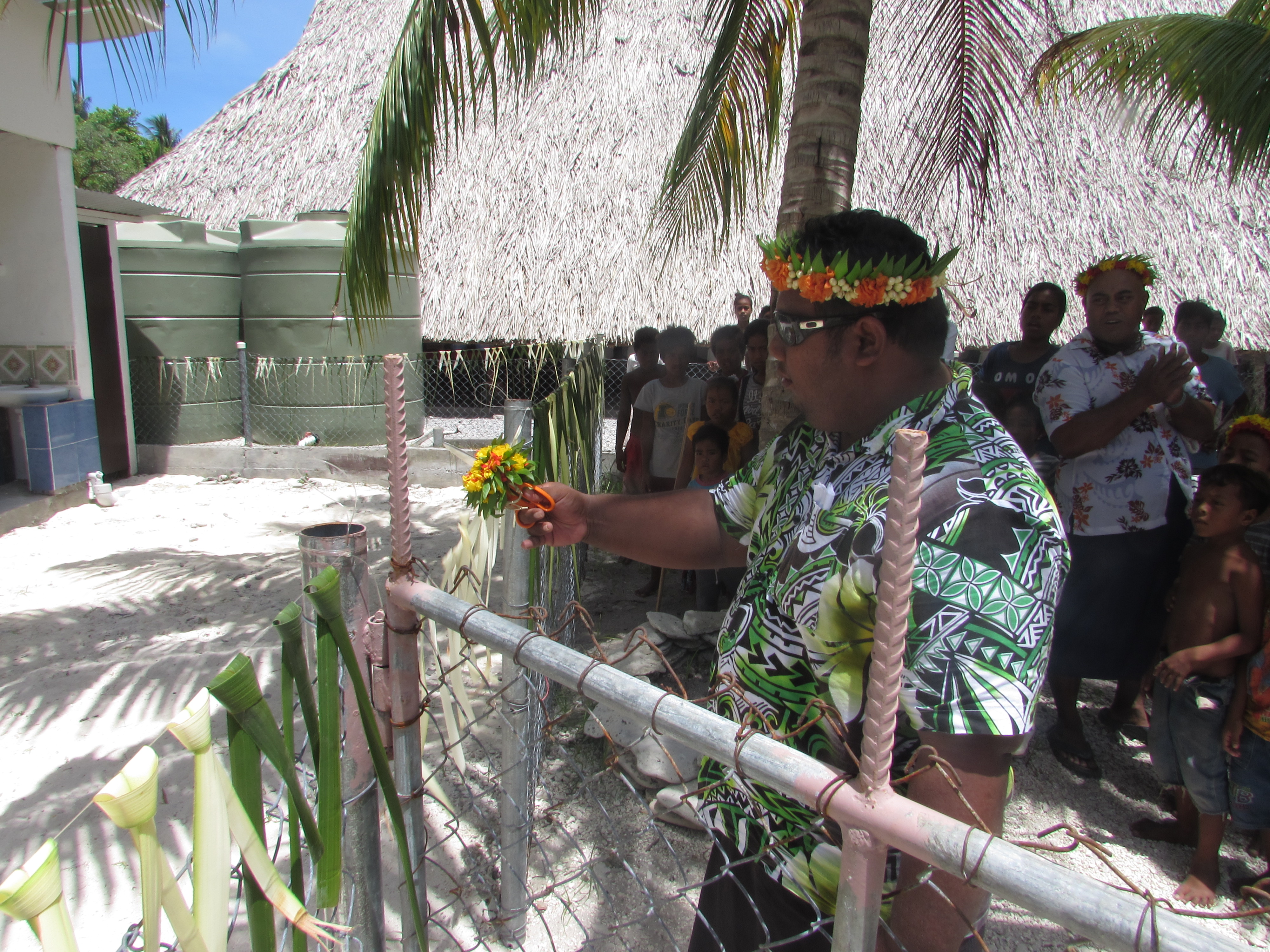Kiribati is a small Pacific island nation comprising of 33 coral atolls and isles with an average height of three to four metres above mean sea level. Its geographic location and economic situation make Kiribati one of the most vulnerable countries to climate change, with sea level rise, coastal erosion, coral bleaching and storm surges already threatening the county’s physical existence. A major challenge on the island is insufficient freshwater supplies due to drought, stresses on existing underground wells, saltwater intrusion, and contamination from animal and human waste. Over the last ten years, population numbers have also increased, putting additional demands on the limited water supplies, as well as on the poor sewage and sanitation systems.

To address these challenges the village councils from five Kiribati communities, namely Bonnano, Mauanako, Kaue, St. Patrick and Te Roti, embarked on CBA projects to rehabilitate their community rainwater catchment and sanitation systems. Rainwater harvesting is a commonly used adaptation technique, which captures rainwater during periods of rainfall and stores it for later use when water is less available. Many rural communities use this technique to improve water supply to households and agriculture fields in the absence of a reliable main water supply.
By improving access to clean water, the projects also helped to increase the communities’ capacity to cope with drought and other climate change impacts. Toilet blocks were built in all the communities, each comprising of four toilets and two showers, and overhead water supply tanks of 3,000 litres apiece were also installed. Four 5,000-litre tanks were also linked to rainwater-catchment roofs of the five community centres, or Maneaba halls. The halls were also installed with 1.5-kiloWatt solar electricity systems to support community night-time actives, and each now acts as a homework centre. Community members also participated in education and awareness sessions focused on water conservation, good sanitation and hygiene and climate change. The project also encouraged the active participation of community members in the construction of the water and sanitation systems, and provided basic training on their maintenance.

In total, 28,900 community members including 5,779 children benefited from projects focused on clean water access and sanitation. Before the project, many children did not have access to safe drinking water, and most of children were tasked each morning with fetching water for the family from wells located far distances from their homes. This took time away from their school hours and affected their concentration and learning capacities. With the instillation of the solar panels on the Maneaba halls, children can now spend longer hours reading and studying, and more community activities can now take place in the evenings and nights. The community toilets also improved the cleanliness and sanitation of the villages and beaches. This project has improved the quality of life, health and welfare of these Kiribati families.
Local culture: In Kiribati, the Maneaba is a traditional village leadership system based on community consensus, where everyone contributes to discussion and decision-making. It is a well-established and respected community institution with its own laws and governance systems, and contributes to community cohesion. Village elders play a key role in distributing responsibilities and sharing resources, and within each village Maneaba, every family or clan has a particular role or function. This system has played an important role on the small Kiribati islands where land and water resources are limited, as it allows for equal distribution of scarce resources. At the centre of most Kiribati villages is the traditional Maneaba hall, which serves as a meeting place for formal and informal matters. The whole community is involved in its construction, and every aspect of the Maneaba has a symbolic as well as a practical function.
This Indigenous community system played a crucial role in getting support from community members at the start of the projects. Consultation meetings were held with the communities at the Maneaba halls to explain the project and to get their input into the planning and design. Complex terminology often associated with climate change was broken down into simple local terms, and vulnerability reduction exercises were conducted in local language to ensure that everyone understood the proposed CBA strategies. Village elders also assigned certain tasks to families and community members to ensure that the communities became fully engaged in the project and understood the importance of their commitment and participation. The Maneaba system was beneficial in mobilizing the community and sustaining community interest and engagement throughout implementation.
This project was implemented over the period 2017- 2018, with funding from the Australian Government’s Department of Foreign Affairs and Trade (DFAT) as part of SGP's Community Based Adaptation Programme (CBA). Improving water access and enhancing water security to address the impacts of climate change was a key focal area for the programme. Learn more about the CBA programme HERE.





